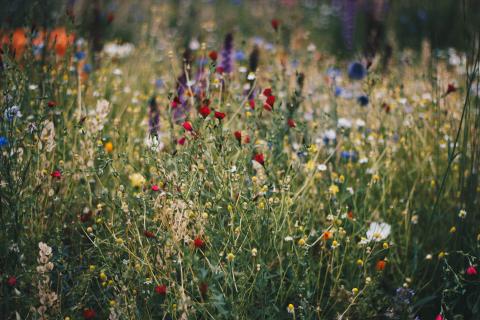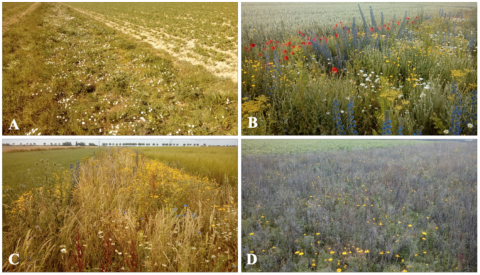
The effects of flower strips and different cropping systems on pest regulation
The emergence of a multifunctional agriculture based on a diversity of services rendered by nature requires the implementation of combinations of agroecological levers that can be managed by farmers. Cropping systems based on reduced or zero use of pesticides and tillage, as well as flower strips, can increase biodiversity in plots, but their contribution to regulatory processes remains poorly quantified.
Since 2018, the Agronomy laboratory has been piloting a network of plots involving 32 farmers in field crops (i.e. cereals, oilseeds, protein crops) located in the Centre and Île-de-France regions. We are quantifying biodiversity at different levels of the food chain (vertebrates, arthropods, soil microorganisms, plants) and several services that nature provides to mankind: regulatory services (pests and soil fertility) and, occasionally, cultural and production services.
After having carried out a biodiversity survey before and after the planting of flower strips (Figure), we would like to extend the monitoring of biodiversity and regulation. On the one hand, continuing to monitor those aspects identified as the most relevant on the basis of our experience would enable us to measure longer-term ecological effects (t+5 years), taking into account the high inter-annual variability of these systems, and on the other hand to launch new experiments.
We also wish to improve certain methods used. Among other things, to understand the role of vertebrates in biological regulation in agricultural environments, we wish to test new indicators developed in other ecological contexts and based on acoustic recordings, as well as the value of metabarcoding (DNA analysis) from bird and chiropteran (eg. bats) feces in order to identify the arthropods (e.g. insects) present in their diet and the consequences for food webs involved in pest regulation (i.e. organisms causing crop damage).
Examples of flower strips in March (A), May (B), June (C) and November (D)
This project (2022-2023) involves:
- 2 C-BASC laboratories and GS Biosphera: Antoine Gardarin (Agronomy, INRAE) and François Chiron (ESE, AgroParisTech), who lead the project
- a laboratory from outside the Université Paris-Saclay: CESCO (MNHN)
- 6 non-academic partners: the Office Français de la Biodiversité, the Association Hommes et Territoires, the Chambers of Agriculture of Ile-de-France, Essonne and Eure-et-Loir, and the Parc Naturel Régional de la Vallée de Chevreuse.

